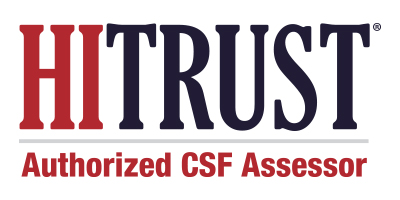
HITRUST vs HIPAA… What’s the Difference?
The Health Information Trust Alliance (HITRUST) and the Health Insurance Portability and Accountability Act (HIPAA) frequently intertwine in security compliance discussions. Yet, what exactly do these terms signify, and how do they differentiate? Let’s look at the distinctions and parallels between HITRUST and HIPAA, their unique attributes, commonalities, and benefits. Additionally, we’ll guide you on when and how to employ them effectively within your compliance initiatives.
Contact Us For A Security Assessment Now
We know that the landscape can be a little daunting when it comes to cybersecurity and healthcare. We already have so many acronyms to consider when handling sensitive information, and sometimes it can get confusing to understand exactly what frameworks are relevant when, and how they need to be implemented. So in this article, we want to demystify some of the intricacies surrounding HIPAA and HITRUST, two key frameworks with different considerations.
Overview of Healthcare Data Security
Healthcare data security stands at the intersection of public trust and the future trajectory of health information technology (HIT). The significance of privacy in this domain cannot be overstated, as public sentiment regarding privacy directly correlates with the level of trust individuals place in the broader healthcare infrastructure. Since the industry has mostly transitioned into Electronic Health Records (EHRs), personal health records, interoperability exchanges, and other technological advancements, ensuring robust data security becomes paramount.
Trust, once eroded, is a delicate commodity that can have profound ramifications. Any compromise in safeguarding patient information not only jeopardizes individual privacy but also threatens the foundational trust patients place in the healthcare system and health researchers alike, underscoring the critical importance of prioritizing healthcare data security in the evolving landscape of HIT.
HIPAA and HITRUST as Key Regulations and Frameworks
Given the importance of healthcare data and the increasingly complex cybersecurity landscape, frameworks are in place to inform organizations handling that sensitive data. HIPAA and HITRUST emerge as pivotal regulations and frameworks respectively in the realm of healthcare information security, each playing distinct yet complementary roles in safeguarding patient data and ensuring the integrity of health information technology (HIT) systems. HIPAA serves as a foundational U.S. legislation that mandates the protection of patient health information, setting forth standards for its confidentiality, availability, and integrity.
While HIPAA provides the regulatory guidelines, HITRUST offers a comprehensive framework known as the Common Security Framework (CSF), which incorporates various industry standards and regulatory requirements, including those of HIPAA. HITRUST CSF provides organizations with a structured approach to managing security risks across their entire information ecosystem, offering a standardized yet flexible framework that aligns with regulatory requirements, best practices, and industry standards. HIPAA and HITRUST CSF equip healthcare entities with the tools and guidelines necessary to navigate the complex landscape of healthcare data security, ensuring compliance, fostering trust, and safeguarding sensitive patient information.
Understanding HIPAA (Health Insurance Portability and Accountability Act)
The Health Insurance Portability and Accountability Act of 1996 (HIPAA), encompasses a comprehensive legislative structure articulated across five distinct Titles.
Title I aims to safeguard health insurance coverage for workers and their families during job transitions, curbing the ability of new health plans to deny coverage based on pre-existing conditions.
Title II focuses on the prevention of healthcare fraud and abuse while promoting medical liability reform and administrative simplification. This title mandates the establishment of national standards for electronic healthcare transactions and necessitates national identifiers for providers, employers, and health insurance plans.
Title III introduces guidelines about pre-tax medical spending accounts and enacts changes to health insurance law, facilitating deductions for medical insurance. Title IV delineates guidelines specific to group health plans, incorporating modifications to enhance health coverage.
Lastly, Title V governs company-owned life insurance policies and introduces provisions concerning individuals without U.S. citizenship, effectively repealing financial institution rules to incorporate interest allocation guidelines.
Collectively, these Titles underscore the multifaceted objectives and expansive scope of HIPAA, addressing various facets of healthcare accessibility, fraud prevention, administrative simplification, and regulatory compliance.
Additionally, HIPAA is organized into three overarching rules:
1. Privacy Rule
HIPAA defines the circumstances under which a person may disclose or use PHI. Everyone has a right to privacy, but as we all know, there are some situations in which the rule might be applied. Those who are covered by this policy must adhere to a set of rules.
2. Security Rule
The HIPAA Security Rule sets out the minimum standards for protecting electronic health information (ePHI). To access that information in electronic format, even those who are technically capable of doing so would have to meet those standards.
3. Breach Notification Rule
Occasionally, there may be a breach. The breach notification rule comes into play here. The Department of Health and Human Services must be informed as soon as possible if there has been a data breach. Regardless of the nature of the breach, this must be done within 60 days of its discovery; this is where a good risk management plan comes in handy.
HIPAA can be a lot to digest, but the important thing to remember is that it is the compliance side of the healthcare industry regarding patient data.
Exploring HITRUST (Health Information Trust Alliance)
The other side of the coin is the HITRUST guidelines and certification. The HITRUST CSF® stands as a comprehensive security, privacy, and compliance risk management framework, drawing upon a spectrum of nationally and internationally recognized standards such as ISO, NIST, COBIT, PCI, and HIPAA.
Designed initially for the healthcare sector, the CSF has evolved to encompass over 30 authoritative sources, spanning state, federal, and foreign regulations. This expansion equips healthcare and other organizations with the capability to streamline their compliance efforts. Instead of undergoing multiple assessments and generating numerous reports, organizations can execute a singular assessment against an array of requirements, thereby optimizing both effort and cost. The CSF’s primary advantage lies in its ability to normalize diverse security requirements, ensuring clarity, consistency, and a reduced compliance burden across varying organizational needs.
To facilitate this certification process, entities can engage with Authorized HITRUST External Assessors like SCA, which offers a suite of services ranging from readiness assessments and remediation assistance to validated assessments and interim evaluations. These services guide organizations through the intricate HITRUST certification journey, ensuring alignment with stringent requirements and regulatory mandates.
SCA’s role as an Authorized HITRUST External Assessor extends beyond mere assessment services, encompassing comprehensive consulting support tailored to an organization’s unique HITRUST trajectory. Whether an organization is initiating its HITRUST journey with an Essentials (e1) Assessment or navigating the complexities of remediation and certification, SCA provides expert guidance and strategic insights. Furthermore, SCA’s no-cost strategy and scoping exercise empower organizations to make informed decisions regarding their HITRUST path, offering clarity on potential controls, fees, and certification options.
Click below to schedule a consult and learn how SCA can help ensure your organization is compliant within the appropriate framework!


